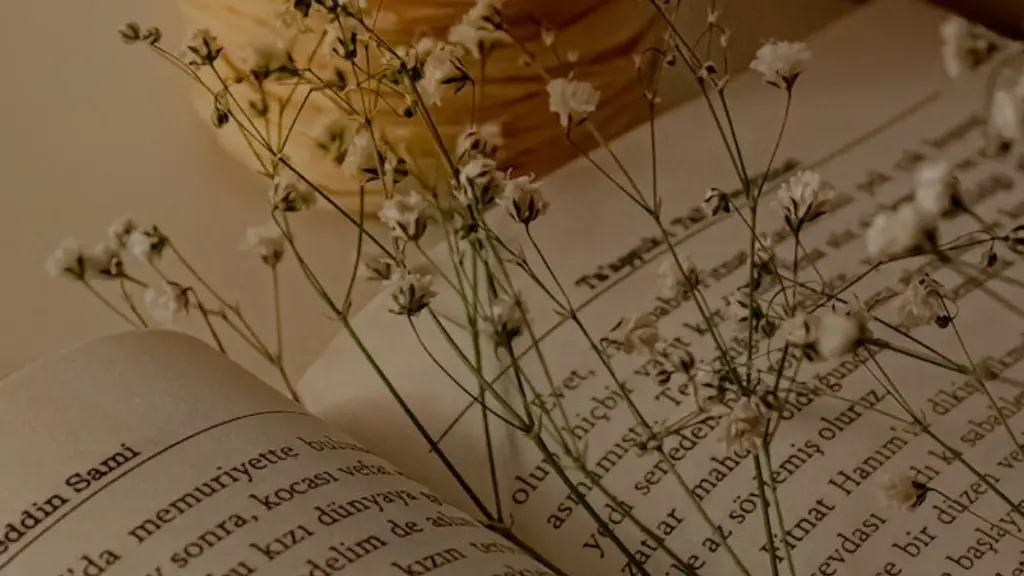Poetry anchor charts are idea-filled visuals that are often used to support students in learning and understanding poetry. The charts serve as a reference for poets-in-training, helping them to try out different techniques and ideas for writing poems, as well as for poetry teachers, offering them a way to clarify and explain ideas and concepts. Anchor charts are a combination of visuals and concise text, designed to make the understanding of poetry concepts easier. They are used to display the important components of a poetic form, define a poetic term, or explain an aspect of poetry, like sound, rhythm, or imagery.
Anchor charts containing poetry teaching tips and techniques can provide the scaffolding necessary to support the development of poetic skills. Modeling is an important teaching tool when it comes to learning and understanding poetry, and anchor charts can act as a reminder of the poetry-writing techniques that are being taught. Anchor charts also offer guidance and encouragement, helping young writers to feel more comfortable expressing themselves and creating pieces of poetry.
When preparing poetry anchor charts, it is important to consider the age, level of understanding, and needs of the students. This will ensure the anchor chart will provide the most effective learning experiences. All the information should be tailored to the level of skill and knowledge of the students; some anchor charts will contain more details and examples than others. The visuals should be simple, but should still incorporate the ideas being taught. Bold, clear fonts should be used to get across the most important points, and the accompanying text should be simple but descriptive. Once the chart is created, it needs to be put in a place where students can easily refer to it.
In addition to helping students learn about and understand the structure of poetry and basic poetic techniques, anchor charts can also be used to help students understand metaphors, the use of figurative language, and how to create their own poems.
Anchor charts are useful in helping to engage students in the process of learning and understanding poetry. They provide concrete representation of the concept being taught and help support student engagement with the poetry-writing process. Anchor charts used effectively can provide more scaffolding for the creative process and help foster a growth mindset for students looking to explore and appreciate poetry.
The 4 types of poetry anchor charts
There are four main types of poetry anchor charts: definition/information, comparison/contrast, writing tips, and project-based.
Definition/information anchor charts are used to explain the parameters of a poetic form or to explain a literary device, poetic term, or poetic element. For example, the definition of a Cinquain poem, the three types of rhyme patterns, or the purpose of a metaphor.
Comparison/contrast anchor charts can be used to compare two similar or different poetic forms or to compare two literary devices, such as the use of assonance and alliteration.
Writing tips anchor charts provide students with helpful tips for writing poetry. These anchor charts can provide guidance and encouragement, helping young writers to feel more comfortable expressing themselves with poetry. For example, an anchor chart on writing a poem could include tips on free writing and taking inspiration from the world around you.
Project-based anchor charts provide a visual overview of a poem-writing project. These can be used to create a visually appealing timeline to guide students through the steps of a poem-writing project.
Examples of poetry anchor charts
The following are examples of poetry anchor charts that can be used in the classroom or at home:
A definition/information anchor chart on the rules of haiku can include an overview of the haiku form, including the number of lines and syllables, and an example poem;
A comparison/contrast anchor chart on modern and traditional poetry could illustrate the differences between how the two genres approach language and structure;
A writing tips anchor chart could list useful tips, such as using the five senses to create imagery and using onomatopoeia to create sound effects;
A project-based anchor chart on writing a sonnet could outline the process of writing a sonnet, including brainstorming, writing, and revising.
The Benefits of Using Poetry Anchor Charts
Using poetry anchor charts in the classroom has many benefits. Anchor charts can serve as a point of reference and visual aid that can help reinforce the concepts being taught. Anchor charts can also be used to assess how well students are understanding the topic, as well as provide guidance to the teacher in developing lessons and activities. Anchor charts can also help students stay organized, as they can be used to create timelines for projects.
Having anchor charts in the classroom can also provide visual reminders for students to refer to, helping them to remember and understand the concept being taught. Anchor charts are also effective visual and instructional tools for ELL students and struggling learners.
Creating Poetry Anchor Charts
When creating poetry anchor charts, it is important to keep the age, level of understanding, and needs of the students in mind. Anchor charts should be simple, containing visuals and concise text. Visuals should be adapted to fit the age and level of the students, and the accompanying text should be kept as simple and to the point as possible.
Anchor charts should also be a balanced combination of text and visuals and should clearly illustrate the concept being taught. The visuals should be clear and bold so that the most important points are easy to identify. Anchor charts should also be placed in a spot that is easily accessible to students, so they can refer to them easily.
The Impact of Poetry Anchor Charts
The use of poetry anchor charts can have a positive impact on students and their understanding of poetry. Anchor charts can act as a reference for students, providing them with a visual representation of the concepts being taught. Anchor charts can also provide students with helpful tips for writing poetry, helping them to feel more comfortable expressing themselves in their writing.
Poetry anchor charts can be used to effectively engage students in the poetry process, helping them to challenge themselves and foster creative thinking. Anchor charts can help create more meaningful learning experiences and help students to better understand and appreciate the beauty of poetry.
Conclusion
Poetry anchor charts are useful visual aids that can support teaching and understanding of poetry. Anchor charts can provide the scaffolding necessary to support the development of poetic skills and can provide guidance and encouragement to young writers. There are four main types of poetry anchor charts—definition/information, comparison/contrast, writing tips, and project-based—and these anchor charts should be adapted for the age and level of understanding of the students. Using anchor charts in the classroom can have a potential positive impact on students and their understanding of poetry, helping them to better appreciate the beauty of this literary form.





